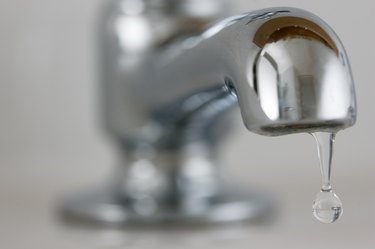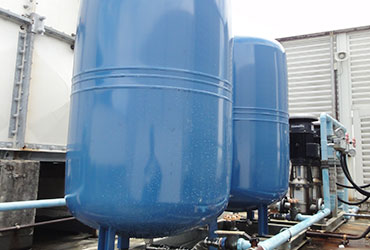Useful Methods for Overcoming Low Water Pressure in Your Home
Useful Methods for Overcoming Low Water Pressure in Your Home
Blog Article
The content which follows about Low Water Pressure in the House? is totally remarkable. You should keep reading.

Low tide stress in your home can be a frustrating issue, influencing whatever from bathing to washing recipes. If you're experiencing weak water circulation, there are numerous possible reasons and remedies to explore. In this guide, we'll discuss usual factors for low water pressure and sensible actions to deal with the concern efficiently.
Intro to Low Water Stress
Low water stress happens when the flow of water from your faucets, showers, and other fixtures is weak than normal. This can make daily tasks a lot more tough and much less efficient. Recognizing the root causes of low water pressure is important to discovering the ideal service.
Usual Reasons For Low Tide Stress
Pipeline Obstructions
In time, pipes can become blocked with natural resource, sediment, or particles, limiting the circulation of water. This is a typical problem in older homes with galvanized steel pipelines.
Rust
Corrosion within pipelines can bring about leaks and decreased water pressure. Rust accumulation can constrict water circulation, particularly in aging plumbing systems.
Faulty Pressure Regulators
Pressure regulators are accountable for preserving regular water pressure in your home. If they malfunction, it can result in low water pressure or uneven circulation throughout your house.
Local Supply Of Water Issues
In some cases, the problem lies outside your home. Metropolitan water system issues, such as main line leaks or maintenance job, can momentarily minimize water pressure in your location.
Just How to Identify Low Water Stress
Inspecting Faucets and Fixtures
Start by examining the water stress at various faucets and fixtures throughout your home. If the concern is separated to details areas, it may suggest localized issues.
Checking Pipes
Inspect visible pipelines for indicators of leakages, corrosion, or clogs. Focus on any unusual noises, such as knocking or rattling pipes, which can show problems within the plumbing system.
Consulting with a Plumber
If you're incapable to identify the reason for low water stress, consider employing a professional plumber to conduct a detailed assessment. They can determine underlying problems and suggest appropriate options.
DIY Solutions to Repair Low Tide Pressure
Cleaning Up Aerators and Showerheads
Mineral deposits can gather in aerators and showerheads, minimizing water circulation. Remove and clean up these components regularly to boost water stress.
Flushing Hot Water Heater
Sediment build-up in the hot water heater can restrict flow and lower performance. Purging the tank occasionally helps eliminate debris and preserve optimal efficiency.
Inspecting Pressure Regulatory Authority
Ensure that the pressure regulator is functioning correctly. Readjusting or changing the regulatory authority can assist recover appropriate water stress throughout your home.
Cleaning Clogs in Pipeline
For minor blockages, attempt using a plumbing serpent or chemical drainpipe cleaner to clear obstructions in pipes. Be cautious when utilizing chemicals and follow security standards.
When to Call a Professional Plumber
If do it yourself efforts stop working to solve the issue or if you think considerable plumbing troubles, it's finest to look for assistance from an accredited plumber. They have the proficiency and tools to deal with intricate problems safely and properly.
Preventive Measures to Maintain Water Stress
Normal Upkeep
Arrange routine maintenance for your plumbing system to avoid issues such as corrosion, leaks, and obstructions. Attending to small troubles early can help avoid more significant repair services later on.
Setting Up a Stress Booster
Consider installing a stress booster pump to improve water stress in areas with constantly reduced flow. This can be particularly useful for multi-story homes or residential properties with high-demand components.
Surveillance Water Usage
Be mindful of water usage routines and prevent ill-using the plumbing system. Simple modifications, such as astonishing showers and laundry tons, can aid preserve appropriate water stress.
Verdict
Dealing with low tide pressure can be irritating, but determining the underlying reasons and executing proper remedies can restore optimal flow throughout your home. Whether it's cleansing aerators, examining pipes, or talking to a plumber, taking positive steps can make sure a consistent supply of water for your everyday requirements.
How to Fix Low Water Pressure In Your Home
Municipal Water Supply Issues
Scheduled maintenance, high demand, and water main breaks are all potential causes for low water pressure within a city or county’s water lines. While there’s not much you can do to personally fix a problem with your city or county’s water supply system, you can play a big role in documenting the issue and alerting those who can.
How to fix it:
Ask your neighbors if they are experiencing any issues with low water pressure. If multiple homes are affected, it’s likely related to the city’s water line. Contact the local Water Authority to see if there is any maintenance taking place that might be affecting your supply. Also let them know of your specific issues. If other homeowners report the same issues, they’ll know that there could be a larger issue to look into. Faulty Fixtures
A damaged or clogged shower head, faucet or appliance is the first thing we’d suggest checking, especially if low water pressure appears to be isolated to a specific area of your home.
How to fix it:
First, turn off the main water supply to your home. Check the affected appliances for build-up or debris. In the case of a faucet, you can simply unscrew the aerator at the tip of the faucet. Showerheads should be fully detached from the water pipe. While the appliances are detached, you may want to check the water supply to determine if the fixtures were in fact the issue. To clean, soak the showerhead or aerator in vinegar and brush off any visible debris. Reattach the fixtures and check the water pressure again. If it is still low, there is likely a deeper issue at hand, which can be determined by a professional plumber. Pipe Obstructions
Mineral deposits, rust or other debris within water pipes can lead to blockages or corrosion over time.
How to fix it:
When you think of a clog, you probably think of a drain clog. While there are many DIY solutions to clearing a drain, clogs in a water pipe will almost always require the help of a professional plumber. A plumber will be able to locate the affected pipe and clean out any debris or mineral deposit buildup. In severe cases, the pipe may need to be replaced. Your plumber might also recommend a water softening system to remove the minerals from your home’s water supply that can contribute to pipe blockages over time.
Plumbing Leak
Undetected water line leaks can divert water away from your residential pipes, reducing the water pressure in your fixtures.
How to fix it:
Check your water meter by turning off all water sources and monitoring the meter for any movement, which could be a clear indicator of a potential leak. Check all visible pipes for signs of leaking, including water stains, active dripping or damp spots around the pipe. Inspect fixtures, including faucets and showerheads, for any drips. Test the pressure but recording the pressure with the main water valve shut off. Leave off for a few hours and test again. A significant drop in pressure is a clear sign of a leak. https://kiddcoplumbing.com/plumbing-blog/how-to-fix-low-water-pressure/

We hope you liked our topic on 10 Reasons for Low Water Pressure in Your House. Thanks for taking the time to read through our short article. For those who liked our article if you please consider to pass it around. Thanks so much for taking the time to read it.
Book Report this page